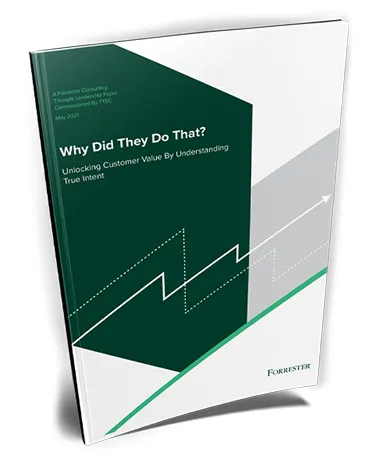Customer Lifecycle Management
What is Customer Lifecycle Management?
Customer lifecycle management (CLM) evaluates several customer-related metrics over time to measure the performance of an organization. The intent of CLM is to source all the static and dynamic data, marketing processes, and value-added services under several departments. This creates a joined decision supporting platform through repeated phases of customer acquisition, retention, cross and upselling, and lapsed customer win-back.
If done right, customer lifecycle management and customer lifecycle marketing helps ensure that customers and clients receive high-quality, personalized service at all times, across all stages of the customer journey.
At TTEC, we manage customer lifecycle stages through the identification of key events that drive customer success. We deliver targeted communications when a new contact enters your marketing database, whether through online or offline sales conversion.
We also collaborate with clients to design the optimal engagement strategy with the right products and services campaigns and advanced analytics to measure and drive targeted prospects, build trusted relationships, and ultimately, achieve sales goals.
Additional Customer Lifecycle Management Resources

- Unlocking Customer Value: A great brand understands what is inside a customer’s head, not just what they explicitly share with them. By understanding a customer’s intent, organizations can be more proactive and effortless in their interactions, to everyone’s benefit. That’s why TTEC and Forrester Consulting recently partnered to create a methodology around “intent mapping,” which links the customer and employee journey in support of the next best interaction. Check out this report to get to the “why” behind customer and employee interactions and deliver better overall experiences.
- Customer Lifecycle Management Best Practices: Two forces are converging and fundamentally changing business: increasing customer data complexity and escalating customer expectations. Handling the former is a way to keep pace with the latter. In this article we discuss the importance of having a holistic, deep understanding of a prospect or customer, and how that is the foundation for successful customer lifetime management and marketing strategies.
- Customer Experience Journey Mapping: With customer experience as a key differentiator for brands, customer journey mapping has become a vital component. Effective journey mapping and a customer lifecycle management platform enables companies to visualize how customers interact with your brand. Our customer experience journey mapping solutions take a deep dive across all customer touchpoints, giving insights into customer behaviors and key moments of truth.
- Customer Churn Prevention: Customer retention is critical for brand success. In this article learn three strategies to better understand your customer segments in order to improve customer loyalty and lifetime value.
- 4 Customer Relationship Management Trends Driving Innovation: CRM and customer lifecycle management software have come a long way. Originally just a knowledge base where customer information is stored, they are now a main digital customer lifecycle management tool. As a result, we have identified four CRM trends and CRM system innovations that are helping organizations in their quest for better customer experience, improved customer engagement, increased opportunity management, and enhanced automation and security.
- Be Proactive with Speech Analytics for Sales: Across all purchase stages, speech analytics is a valuable tool to better understand your customer base. This customer lifecycle analysis should be part of your marketing campaign strategy to drive sales revenue and create moments that truly matter with your target audiences. In this strategy guide, learn how to better understand your ideal customer in order to increase your marketing and sales funnel conversion rates.
- Five Essential Steps to Customer-Centric Digital Transformation: Moving from a channel-centric to customer-centric operating model can feel like a mammoth undertaking. Don't worry! In this White Paper, we'll explain the five key steps to enable end-to-end digital transformation and digital customer lifecycle management that improves customer satisfaction, reduces cost, and increases revenue.
- Loyalty Program Strategy: Implement these five best practices to optimize your loyalty program strategy post purchase to better match your overall business strategy and to increase customer retention.
- Customer Journey Strategy: There are many things a business can do to become truly customer-centric. When done well, journey maps are a powerful way to optimize customer lifecycle management and gain insights into new customer value. In this strategy guide we discuss five simple steps brands can take to use the customer journey as a map to guide overall CX transformation.
- Unlock Customer Loyalty with Emotional Engagement: Providing amazing customer service is the key to turning potential customers into customers, existing customers into repeat customers, and loyal customers into long term brand advocates. In this article, learn how to improve customer lifetime value and overall brand loyalty.
- Customer Acquisition as a Service: Insight-based and outcome-driven, we help you find, acquire, and engage customers across all channels to increase sales and customer lifetime value. Our account management solutions manage customer lifecycle stages through advanced analytics and the identification of key events that drive customer success. Our cross-sell and upsell solutions increase the lifetime value and incremental revenue of customers by tailoring offers to complement and enhance their satisfaction.
- Customer Retention and Loyalty Solutions: foster long-lasting relationships and help brands create memorable experiences in the moments that matter to build customer loyalty with every interaction. Our churn reduction solutions address at-risk customers and improve customer retention through a data-driven, personalized approach. Our loyalty optimization solutions leverage a proactive, data-driven process to help build loyalty and expand your share of wallet.
